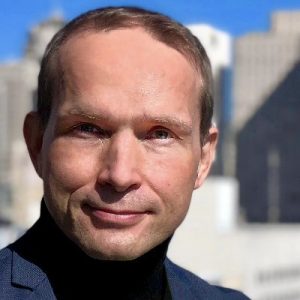The EnvSys Workshop is co-located with ACM MobiSys 2023 and scheduled to take place on June 18, 2023. To enhance the learning and networking experience, this year we have decided to merge the workshop with the NetAISys Workshop, resulting in a combined day-long workshop.
Both workshops revolve around the pivotal roles of the Internet of Things and Artificial Intelligence, focusing on different but complementary aspects. While, NetAISys explores the integration of AI with networking systems, investigating the challenges and opportunities it brings. EnvSys emphasizes the application of these technologies to environmental sensing, tackling crucial environmental issues using emerging technological solutions.
We believe that merging the two workshops will serve as a platform for fruitful discussions and exchange of ideas, giving you exposure to a broader spectrum of research at the intersection between environmental sensing, AI, and enabling technologies. This will also provide an enriched setting where the EnvSys cases can potentially act as real-world use cases for networked AI systems.
The program for this joint workshop will feature a total of 14 papers, 7 from each workshop, and two keynotes. Each presentation will have a 12-minute slot, followed by a 3-minute Q&A session. Below, please find detailed information about the program and the schedule.
Note that registration for the workshop/conference will begin at 9:00 am at Fabianinkatu 26, 00100 Helsinki. The workshop will also be held at the same location. For more information, please visit the venue page on the main conference website.
Detailed Program Schedule*
*Please note that this is a tentative schedule and may undergo minor modifications.
Registration: 09:00
Starting time: 09:20
Opening remarks from the workshop chairs: 09:20 – 09:30
Keynote 1**: 09:30 – 10:00 (Stephan Sigg, Assoc. Prof. @ Aalto University)
Session I: 10:00 – 10:30
10:00 – 10:15 (EnvSys’23) Sensing Indoor Lighting Environments and Analysing Dimension Reduction for Identification
Tushar K Routh, Nurani Saoda, Md Fazlay Rabbi Masum Billah, Nabeel Nasir, Brad Campbell (University of Virginia, USA)
10:15 – 10:30 (NetAISys’23) The Case for Hierarchical Deep Learning Inference at the Network
Ghina Al-Atat, Andrea Fresa, Adarsh Prasad Behera (IMDEA Networks Institute); Vishnu Narayanan Moothedath, James Gross (KTH Royal Institute of Technology); Jaya Prakash Champati (IMDEA Networks Institute)
Coffee Break: 10:30 – 11:00
Session II: 11:00 – 12:30
11:00 – 11:15 (NetAISys’23) Improving the quality of Federated Learning processes via Software Defined Networking
Ahmad Mahmod, Giuseppe Caliciuri, Pasquale Pace, Antonio Iera (DIMES-University of Calabria)
11:15 – 11:30 (NetAISys’23) WIP: How Latency Differences between Workers Affect Parameter Server Training
Leonard Paeleke, Holger Karl (Hasso-Plattner-Institute)
11:30 – 11:45 (NetAISys’23) Edge-based Privacy-Sensitive Live Learning for Discovery of Training
Shilpa George, Haithem Turki, Ziqiang Feng, Deva Ramanan (Carnegie Mellon University); Padmanabhan Pillai (Intel Labs); Mahadev Satyanarayanan (Carnegie Mellon University)
11:45 – 12:00 (EnvSys’23) Robust Proxy Sensor Model for Estimating Black Carbon Concentrations Using Low-Cost Sensors
Juan Paredes-Ahumada (Universitat Politecnica de Catalunya); Pau Ferrer-Cid; Jose M. Barcelo-Ordinas; Jorge Garcia-Vidal ; Cristina Reche; Mar Viana (Institute of Environmental Assessment and Water Research (IDAEA-CSIC))
12:00 – 12:15 (EnvSys’23) Prediction of particulate matter concentration in urban environment using Random Forest
Emilio Graciliano Ferreira Mercuri (Federal University of Parana, Brazil); Isadora Bergami (ExxonMobil); Steffen Manfred Noe (Estonian University of Life Sciences, Estonia); Heikki Junninen, Ulrich Norbisrath (University of Tartu, Estonia)
12:15 – 12:30 (EnvSys’23) Protocol for hunting PM2.5 emission hot spots in cities
Spanddhana Sara (International Institute of Information Technology, Hyderabad, India); Andrew Rebeiro-Hargrave (University of Helsinki, Finland); Shreyash Gujar, Om Kathalkar; Samu Varjonen; Sachin Chaudhari; Sasu Tarkoma (University of Helsinki, Finland)
Lunch Break: 12:30 – 13:30
Keynote 2**: 13:30 – 14:00 (Kimmo Pentikäinen, Vice President @ Elisa Corporation, Finland)
Session III: 14:00 – 15:00
14:00 – 14:15 (NetAISys’23) Machine Vision Based Wireless Link Layer Anomaly Characterization
Valerij Jovanov, Blaž Bertalanic, Carolina Fortuna (Jožef Stefan Institute)
14:15 – 14:30 (NetAISys’23) SAFR: A Real-Time Communication System with Adaptive Frame Rate
Wenpei Yin, Bingcong Lu, Yan Zhao, Jun Xu, Li Song, Wenjun Zhang (Institute of Image Communication and Network Engineering, Shanghai Jiaotong University)
14:30 – 14:45 (EnvSys’23) BreathEasy: Exploring the Potential of Acoustic Sensing for Healthy Indoor Environments
Bhawana Chhaglani, Camellia Zakaria, Jeremy Gummeson, Prashant Shenoy (University of Massachusetts Amherst, USA)
14:45 – 15:00 (EnvSys’23) A mixed data grid approach for systemic city questions
Tom Langhorst, Simona Orzan, Teade Punter, Bernd-Jan Witkamp (Fontys Hogeschool ICT, Netherlands)
Coffee Break: 15:00 – 15:30
Session IV: 15:30 – 16:00
15:30 – 15:45 (EnvSys’23) Feasibility of Air Quality Monitoring from Transport Vehicles
Naser Hossein Motlagh, Martha Arbayani Zaidan, Pak Lun Fung, Andrew Rebeiro-Hargrave (University of Helsinki ); Heikki Salminen, Matti Irjala (Aeromon Ltd.); Tareq Hussein, Tuukka Petäjä, Petteri Nurmi, Sasu Tarkoma (University of Helsinki)
15:45 – 16:00 (NetAISys’23) The effect of network topologies on fully decentralized learning: a preliminary investigation
Luigi Palmieri, Lorenzo Valerio, Chiara Boldrini, Andrea Passarella (IIT-CNR)
Closing Remarks: 16:00 – 16:10
Keynote Speakers

Stephan Sigg (Associate Professor, Department of Communications and Networking, Aalto University)
Talk: Free-space gesture interaction through communication and sensing conversion
Abstract – Recent advances in RF-sensing have demonstrated that communication systems (e.g. WiFi, cellular, LoRa, Blue-tooth, etc.) may not only provide connectivity but also sensing and environmental perception capabilities. Therefore, RF convergence – realizing sensing capabilities utilizing resources originally reserved for communication – has gained attention as a potential solution to better utilize the available spectrum. The proposed designs target architectures where sensing and communication are co-designed at the physical and Medium Access Control (MAC) layer. Supported by edge intelligence, this enables new possibilities for free-space (gesture) interaction, activity recognition or localization, and tracking in IoT-augmented smart computing environments. The talk will summarize recent developments in RF sensing and highlight challenges and opportunities for interaction in the context of HCI.
Biography: Stephan Sigg is an Associate Professor at Aalto University in the Department of Information and Communications Engineering. He heads the Ambient Intelligence research group. Prior to Aalto University, he has worked in Germany and in Japan. Professor Sigg’s research is focused on the design, analysis, and optimization of (randomized) algorithms in Mobile and Pervasive Computing domains, in particular focusing on (wireless) networking and security. In recent years has worked on problems related to usable security, device-free human sensing, pro-active context computing, distributed adaptive beamforming, communication, and Sensing convergence, and physical layer function computation.

Kimmo Pentikäinen (Vice President Business Development, Elisa Corporation, Finland)
Talk: Advancements in Mobile Computer Vision: Supersight Application and Its Real-World Use Cases
Abstract – The Supersight mobile application presents a revolutionary approach to the utilization of computer vision technology. It offers a streamlined method to collect and analyze people flow data, traditionally an expensive and complex undertaking. This talk will delve into how we’ve simplified the process with an easy-to-use mobile application and immediate deployment model, making it accessible for varied projects and requirements. We explore different real-world applications where Supersight has shown significant impact. This includes analytics for business premises, event management, cargo container inspections, and real-time aircraft maintenance analytics. The objective is to demonstrate how innovations in computer vision can have direct and practical implications for industries and how these advancements can be harnessed for further research and applications.
Biography: Kimmo Pentikäinen is developing new businesses and leading technology transformations in Elisa Corporation. His current focus is establishing 5G business with new services including 12K video, telepathology, robotics, remote control of heavy machines, 8K live 360 drone broadcasting, 3D model cloud streaming. Kimmo’s extensive experience and knowledge involves leading the transformation to utilise AI in internal processes as mobile network operations and customer interactions. While head of research, he created a network of 1400+ scientists around the world.
